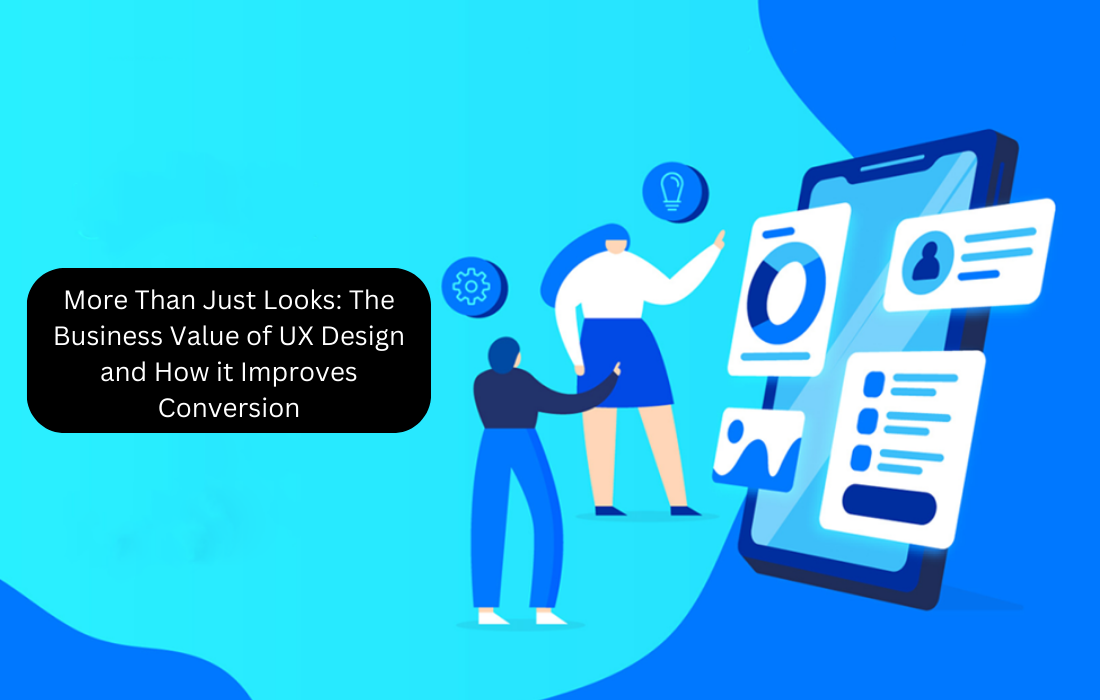
Websites today need more than just visual appeal. The user experience, or UX, can make or break the success of a site. In this article, we will explore why UX design has immense business value. Good UX keeps users engaged instead of frustrated. It makes key tasks intuitive and enjoyable. When done right, UX transforms more site visitors into paying customers. We’ll break down exactly how and why streamlined UX boosts conversions and your bottom line. Clear navigation, seamless interactions, and understanding user psychology drive this impact. With compelling examples, we’ll show how UX design lifts real revenue results through improved conversion rate optimization.
The Importance of UX for Business Success
UX design is crucial for any modern business looking to succeed. Creative ui/ux design directly impacts how users interact with a company’s products and brand. Poor UX that confuses or frustrates customers can quickly drive them to competitors. On the other hand, intuitive and pleasing UX keeps users engaged and converts them into loyal brand advocates. UX is no longer just a nice extra, it is now a key component of business strategy.
UX design has measurable effects on important business metrics like conversion rates, customer acquisition cost, and customer lifetime value. For example, a short and seamless checkout process will convert more shoppers into buyers. Clean and clear product pages will reduce bounce rates. Smart UX optimization leads to real financial gains. Companies that ignore the user experience do so at their own peril.
Industry leaders like Apple, Amazon and Uber have built billion-dollar brands around a commitment to UX. Their products and services set new standards for user-centric design. This relentless UX focus allows them to charge premium prices and maintain customer loyalty. For any business today, following their lead on UX is no longer optional, it is absolutely essential for success. Delivering great UX needs to be top priority.
How UX Design Improves Conversion Rates
There are many ways that thoughtful UX design directly leads to higher conversion rates. Optimizing the user journey removes points of friction and confusion that could potentially lose conversions.
Here are some of the biggest levers that UX designers have to improve conversion rates:
- Intuitive interface design: Straightforward navigation, clear CTAs, and overall ease-of-use allow users to complete desired actions smoothly without hesitation. This improves conversion rate.
- Information architecture: Logical content hierarchy and seamless information flows help users quickly find what they want. This reduces bounce rates and drives more users through the conversion funnel.
- User testing and iteration: Observing real users and rapidly iterating based on feedback leads to UX improvements tailored to user needs. Refined UX converts visitors into customers.
- Micro-conversions: Adding many small conversion opportunities throughout the journey incrementally builds momentum. More micro-conversions drive major conversions.
- Optimized user flows: Carefully mapping and streamlining the end-to-end user journey removes unnecessary steps and friction. Guided paths lead users smoothly towards conversion goals. Reduced steps and clearer flows increase conversion rates.
Also read: Leading Small Business Ideas While Spending Less
Optimizing UX Beyond the Purchase Funnel
UX design does not stop once a purchase is made. Optimizing the post-purchase user experience is equally important for business success. UX improvements that increase customer engagement, satisfaction and loyalty after the sale provide immense additional value.
Post-purchase UX optimization should focus on enabling continued product usage, reducing churn, and fostering brand advocacy. Key areas to focus on include:
- Onboarding flows to get new users acquainted with features and capabilities.
- Education and support content to aid ongoing product usage.
- Community forums to connect users and facilitate peer learning.
- Loyalty programs and promotions to maintain engagement.
- Ongoing UX refinements and improvements to delight users.
- Social sharing options to gain new referrals and evangelists.
The ultimate goal is to create a post-purchase experience that delights users and turns them into loyal brand promoters.
The Expanding Role of UX
UX beyond websites and apps
With the growth of new technologies like AI, VR/AR, wearables and smart devices, UX design now extends far beyond just websites and mobile apps. As technology evolves, UX design practices and principles need to expand as well.
Conversational UXV
oice interfaces like smart speakers are gaining popularity. This requires designing smooth and intuitive conversational flows. Conversational UX is an emerging focus area with new challenges and best practices.
Internet of Things
UX design for connected devices in the Internet of Things (IoT) introduces new factors like physical controls and real-world user contexts. Designing robust IoT experiences requires immersive user research.
Omnichannel experiences
Users now engage across various touch points like web, mobile, in-store, etc. Omnichannel UX looks at the end-to-end experience and gaps across channels. Removing omni-channel friction is an important focus area.
International audiences
With global digital audiences, UX designers have to consider cultural nuances and localization. Sociocultural context is key for optimizing UX for international users.
Conclusion
UX design has a real business impact that goes far beyond visuals. Now you understand why it deserves investment to drive outcomes. By focusing on the full user experience and creative ui/ux design, UX creates sites that work for customers. This leads more of them to convert and deliver a return on investment. We’ve seen specific examples of how improved UX metrics create results. Simple and intuitive experiences keep people engaged. Meeting user needs and psychology pays dividends. Any site that involves transactions and conversion should apply these lessons. Tie UX design directly into your business goals. Plan it in from the start to maximize value – improving UX and creative ui/ux design will directly improve your bottom line.
